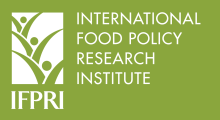Resource information
Although wild natural resources are a standard dietary component in southern Africa, little information exists on these resources' specific role in the maintenance of household food security among HIV-impacted households. In this context, the influence of cash savings or income generated through use or sale of natural resources (e.g., using fuelwood instead of electricity to be able to afford to buy food) is also not known. Indeed, to date the environmental dimensions of the AIDS epidemic remain little explored, despite the centrality of the natural environment in the livelihoods of the rural poor across Africa. Filling this information gap is important, given that Sub-Saharan Africa is generally typified by the interlinked phenomena of rapidly rising HIV prevalence rates, high levels of food insecurity, dependence on natural resources for rural livelihoods, climatic variability, and environmental degradation. Nowhere are associations between these pheomena more urgent than in southern Africa, which has the highest rates of HIV infection in the world.


